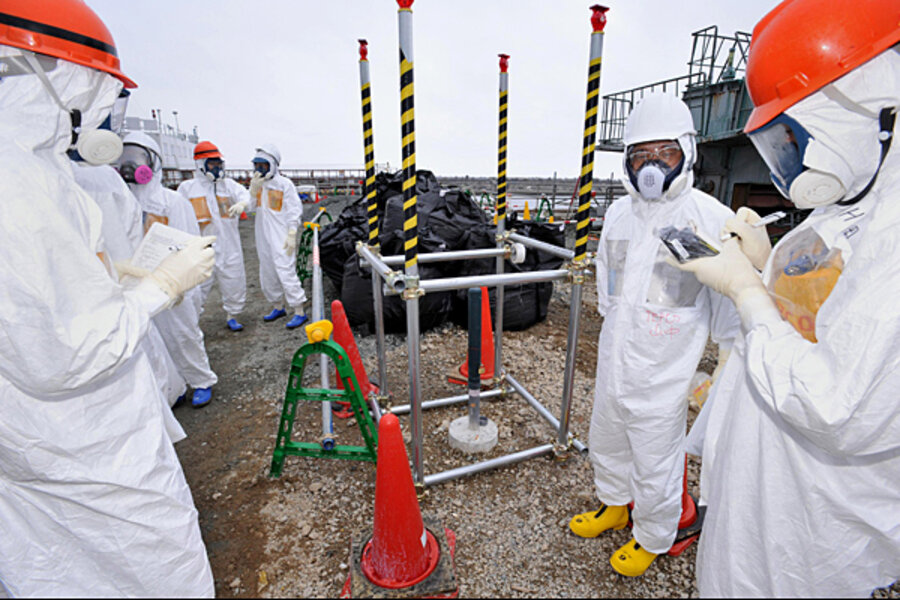Fukushima isn't the only nuclear plant leaking radioactive water
Loading...
Water is an essential ingredient for the operation of most nuclear power plants, from providing the liquid that is flashed to steam to drive turbines to providing coolant for storage of spent fuel. In most NPPs, water is drawn from nearby rivers or from the ocean.
Unfortunately, that reliance can also prove to be a liability.
In reviewing the 11 March 2011 catastrophe that overwhelmed Tokyo Electric Power Co.’s six reactor Fukushima Daiichi NPP, few people remember that it was not the Richter 9.0 earthquake, the fifth largest in modern history, that devastated the facility, but the massive tsunami subsequently generated by the undersea tremor.
Which incidentally killed 25,000 people.
Fukushima Daiichi NPP’s seawall was not high enough to stop the tsunami, which destroyed the facility’s backup diesel generators and fuel tanks upon which keeping the nuclear fuel cool now depended, as the earthquake had severed the facility’s connections to the national electric grid. Nine tsunami generated waves battered the shore. (Related article: The Key to Advancing Nuclear Energy)
Two years on, the crippled NPP has yet to be stabilized and its radioactive contents are being spread by – water. On 22 July TEPCO spokesman Masayuki Ono told a regular news conference that plant officials believed that radioactive water that leaked from the wrecked reactors probably seeped into the underground water system and accordingly was likely leaking contaminated water into the sea, acknowledging for the first time a problem long suspected by experts.
How much?
The Japanese government’s Agency for Natural Resources and Energy estimates that 400 tons of groundwater contaminated with radioactive materials are now leaking into the ocean daily from the crippled plant. The Japanese government is now sufficiently alarmed that on 7 August Prime Minister Shinzo Abe told a meeting of the Nuclear Emergency Response Headquarters, "The problem of contaminated water is the most pressing. Rather than leave it up to TEPCO, the central government will come up with the measures to deal with it. The industry minister will instruct TEPCO in order to implement swift and multilayered measures."
Moving southwards, Taiwan’s First Nuclear Power Plant on the island’s northern coast, operating since 1979, has spent fuel rod storage pools that have leaked since December 2009.
How much?
According to the Taiwanese government’s watchdog, Control Yuan, the pools of the two reactors leaked 15,370 milliliters and 4,830 milliliters respectively, with the water containing radioactive materials including Caesium-137, Cobalt-60, Manganese-54, and Chromium-51. The most ominous aspect of the report notes that the NPP operator Taiwan Power Co had failed to find the causes and the leaks continue.
Closer to home, but still tied to Japan via its wartime production of plutonium, used in the “Fat Man” bomb that destroyed Nagasaki is the largely decommissioned Plutonium Finishing Plant in Hanford. From 1944 to 1989 Hanford produced 74,000 tons of weapons-grade plutonium-239, ultimately producing nearly two-thirds of all the plutonium in the U.S. military’s nuclear arsenal. (Related article: Chernobyl at Sea? Russia Building Floating Nuclear Power Plants)
And what is the site’s bigger enemy than Communism?
Again, water. The U.S. Department of Energy estimates that since 1994 roughly 450 billion gallons of industrial and radiological contaminants were dumped directly into the soil, while some of it was stored. Hanford’s elderly complex of 177 underground tanks contain 53 million gallons of chemicals and radioactive liquids, and 67 of the tanks have together leaked more than a million gallons. The DOE recently identified six more tanks that have sprung leaks, further threatening water supplies for millions across the Northwest.
No doubt the pro-nuclear industry shills will protest this litany of nuclear industry errors, but two questions remain. If nuclear energy is so safe, why is the industry incapable of dealing with the relative simple plumbing issue of water leaks? Since they evidently cannot, then why would one believe that they have mastered the intricacies of nuclear reactor operation? Secondly, if the NPP by-products are so safe, why does every government in the world go to such strenuous efforts to contain them even while assuring their populaces that there’s no risk?
Original article: http://oilprice.com/Alternative-Energy/Nuclear-Power/More-bad-news-for-the-Pacific-Taiwanese-NPP-leaking-radioactive-water.html







